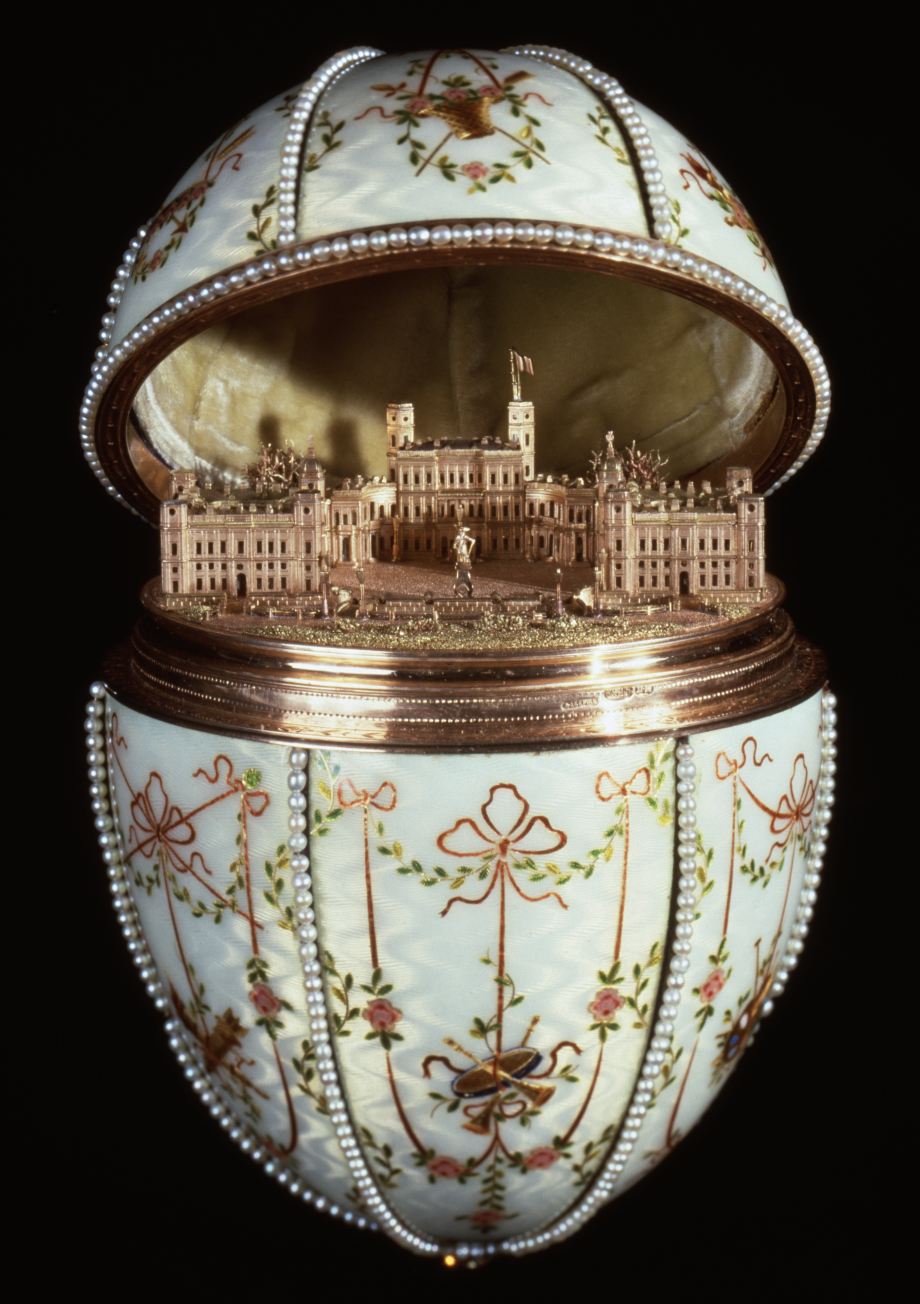Faberge Eggs
In TSARINA, Natalya is on a quest to find a magical Faberge egg. The egg was enchanted by Rasputin for the Romanov family- with it, the Romanovs will always control Russia. The egg also keeps the Romanovs healthy, cures them when they’re sick, binds them to the land…it’s why Alexei Romanov’s hemophilia is no longer a problem, why it snows when the Tsar wants it to, and why wild elk happily eat from the Romanov sisters’ hands.
The magic may not be real, but Faberge eggs are. Here’s some knowledge about them:
1) A lot of people think any sparkly, bejeweled egg is a Faberge egg but…not so much. The term “Faberge egg” only applies to a very specific group of eggs made by the Faberge company between 1885 and 1917.
2) The eggs were commissioned as Easter gifts. The tradition began when Alexander III had the Hen Egg commissioned for his wife, Maria Feodorvna. She loved the egg so much that Alexander began commissioning them for her every Easter.
3) Each egg had a surprise inside. For example, the Moscow Kremlin Egg is a music box:

The Catherine The Great Egg has a mechanical sedan chair inside, with a little figure of Catherine the Great on it. The super cool chair has, sadly, been lost, but at least we still have the Egg itself….

And the Standard Yacht Egg has a freaking boat in it:

4) After Alexander III died, his son, Nicholas II (the last Tsar- Alexei’s father) began commissioning the eggs both for his mother and his wife, Alexandra.
5) Only 57 of these eggs are left of the 65 that were originally made. The eight “missing eggs” were either lost, stolen, or misplaced over time. If you see one, call me?
6) Of those 65 eggs, only 52 were made for the Romanov family. Once other nobles saw how awesome the eggs were, they began commissioning their own. Very few could afford them, but the Rothschild family had a few, as did an industrialist named Kelch and the Duchess of Marlborough.
7) The eggs typically had something to do with the Romanov family. For example. in 1915, the egg for the Tsarina was Red Cross themed, since she and her daughters were volunteering with the Red Cross as nurses:

8) Despite the royal family’s reputation for unapologetic opulence, they actually didn’t commission any eggs at all in 1904 and 1905, since Russia was in the middle of the Russo-Japanese war and they thought it would be in poor taste to spend so much on luxuries. They also had some eggs made of less expensive materials during World War 1- for example, the Steel Military Egg:

9) Stalin, everyone’s favorite guy (much sarcasm there) sold a lot of the eggs in 1927 to try and raise money for the government, which is why all the remaining eggs are sort of spread out all over the world. Many are even owned by private (and very wealthy) collectors.
The Pelican Egg, for example, is in Virginia:

The Gatchina Palace Egg (one of my favorites!) is in Maryland:

The Diamond Palace Egg is in a private collection:

The Basket of Wild Flowers Egg belongs to the Queen of England these days:

Zero of the eggs are in my living room. Which, I know, my house is no place for a rare Faberge egg.
But still. I wish it was.
Mirrored from JacksonPearce.com.